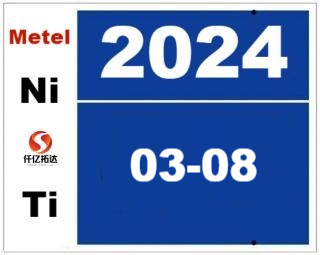Structural design and application scenario: Structural design of titanium flat flange and its application scenario in pipeline connection.
[ 信息发布:本站 | 时间:2024-03-14 | 浏览:543 ]

The structural design of a titanium flat flange for pipeline connections involves careful consideration of various factors, including material properties, flange dimensions, bolt patterns, sealing mechanisms, and environmental conditions. Here's a general overview of the structural design and application scenario of a titanium flat flange in pipeline connections:
Structural Design:
-
Material Selection: Titanium is chosen for its excellent corrosion resistance, high strength-to-weight ratio, and durability. The specific titanium alloy selected depends on the operating conditions and requirements of the pipeline.
-
Flange Dimensions: The design of the flat flange includes determining the appropriate dimensions, such as outer diameter, inner diameter, and thickness, to accommodate the pipe size and pressure rating.
-
Bolt Pattern: The flange design includes the arrangement and number of bolt holes, which must align with the corresponding bolt holes on the mating flange for proper alignment and connection.
-
Sealing Mechanism: The flat flange design incorporates a sealing mechanism, such as a gasket or O-ring, to ensure a leak-tight seal between the mating flanges and prevent fluid or gas leakage from the pipeline.
-
Stress Analysis: Finite element analysis (FEA) or other stress analysis methods are employed to assess the structural integrity of the flange design under operating conditions, including internal pressure, temperature fluctuations, and external loads.
-
Compliance with Standards: The design of the titanium flat flange must comply with relevant industry standards, such as ASTM, ASME, or API standards, to ensure compatibility and reliability in pipeline applications.
Application Scenario:
-
Pipeline Connection: The titanium flat flange is used to connect two sections of pipeline, allowing for the transfer of fluids or gases between them. It serves as a junction point where the pipeline can be easily assembled or disassembled for maintenance or modifications.
-
Industrial Applications: Titanium flat flanges find applications in various industries, including oil and gas, chemical processing, aerospace, and marine. They are used in pipelines for conveying corrosive fluids, high-pressure gases, or in environments with elevated temperatures.
-
High-Performance Requirements: In applications where reliability, durability, and resistance to corrosion are critical, such as offshore oil and gas platforms or chemical processing plants, titanium flat flanges offer superior performance compared to traditional materials like steel or stainless steel.
-
Extreme Conditions: Titanium flat flanges are suitable for use in harsh environments, including offshore installations, where exposure to seawater, high pressures, and corrosive chemicals can degrade conventional materials over time.
-
Weight Savings: The lightweight nature of titanium allows for easier handling and installation of pipeline components, especially in applications where weight restrictions or transportation logistics are considerations.
Overall, the structural design of a titanium flat flange for pipeline connections involves meticulous engineering considerations to ensure reliability, safety, and performance in demanding industrial applications.
Shaanxi Qianyi Tuoda Technology Co., Ltd;Email:qy002@sxqytd.com;WhatsApp +8618829679311
